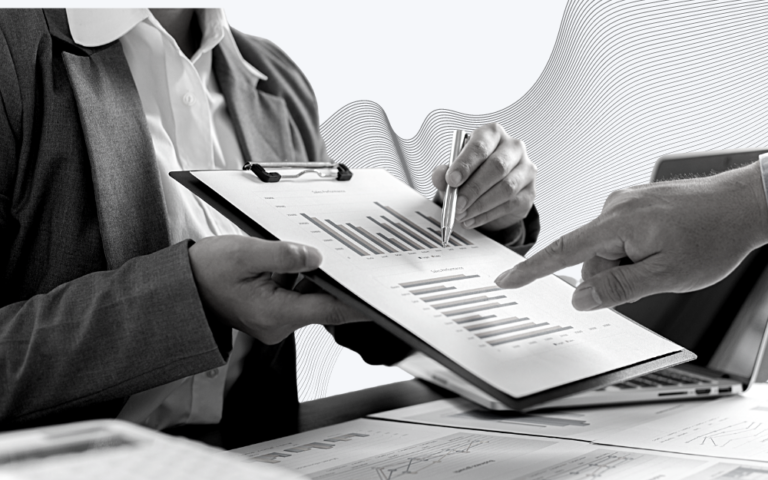Fundraisers have always relied on their instincts and experiences to predict how donors will respond to their appeals. But with the right analytics tool, fundraisers can gather donor behavior insights and make better predictions about their donors’ likelihood to give.
Ultimately, donor analytics is all about setting yourself up to make a fundraising appeal to the right donor, for the right amount, at the right time, and in the right way.
This article explores how to use your donor data to do just this! But first, let’s discuss what donor analytics really means.
What is Donor Analytics?
Every donor has a unique set of interactions with your organization. Over a year, a donor may give $200, open ten email newsletters, go to your walkathon event, and volunteer twice a week. Donor analytics is the process of recording and analyzing donor interactions like these to identify trends and gain actionable insights.
As there are infinite variables you could study, donor analytics is a vast field. If you wanted to, you could even perform an analysis on your donor’s golfing habits! However, it wouldn’t be a great use of anyone’s time to do a deep dive on your donors’ handicaps.
So, I’ll outline some of the key donor interactions from which you’ll be able to draw actionable insights to boost the success of your next appeal.
FREE Donor Profile Template for Fundraisers
Use this template to record and track important details about your donors and prospects so you can target the right individuals for the right fundraising campaigns.
The Right Donor
Depending on its size, a nonprofit can have thousands, to hundreds of thousands, of contacts. Even for smaller organizations, it can be nearly impossible to manually sift through every contact’s details, analyze their interactions, and decide if they’re ready to make a donation or require additional stewardship efforts.
Using analytics to gauge each of your contacts’ engagement levels is an excellent way to save yourself time-consuming work. Unfortunately, there isn’t a simple way to calculate donor engagement manually, so you’ll need donor analytics software like Fundraising KIT.
Donor Score
To make sure you’re up to date with each donor’s engagement level, KIT has a built-in Donor Score feature that segments and prioritizes your donors to determine who’s most engaged and who you most need to reach out to.
KIT examines several factors of a donor’s giving history to determine their score.
- Their average annual donation amount,
- How long they’ve been a donor for,
- And whether there’s been an increase in their donations in the last year.
Perhaps the most useful application of Donor Score is that it’s much easier to know when to engage in different stewardship efforts.
For example, for a donor that has a low score, it may be a good time to reach out and share exciting organizational updates and impact stories to inspire them. Or, for a donor with a high score, it may be an excellent time to reach out and thank them for their support.
What’s more, you could even segment your donors based on their scores and send out mass stewardship communications saving you tons of time. We’ll talk more about segmentation later!
The Right Ask Amount
One of the most nerve-racking considerations in fundraising is how much to ask for. Research tells us that asking your donors for the right amount can increase the likelihood of soliciting a gift while reducing the chances of underestimating their ability to give.
For example, if you ask for too much, you could discourage your donors and end up with nothing. On the other hand, if you ask for too little, you could miss out on a more significant donation the donor was prepared to make. It’s challenging to find that sweet spot!
How Fundraisers Can Use Donor Analytics to Raise More Funds
For example, if you ask for too much, you could discourage your donors and
To come up with the right ask amount, you should consider a donor’s largest gift to date and their most recent gift. Here’s a quick formula and example of how you can use these factors to calculate the right amount for your next appeal:
(65% * (Maximum Gift Amount) + 35% * (Last Contribution Amount)) * 120% = Next Ask Amount
([0.65 * $10,000] + [0.35 * $7,500]) * 1.2 = Next Ask Amount
Next Ask Amount = $10,950
Based on this example, if a donor’s maximum gift amount was $10,000 and their most recent gift was $7,500, you should ask for $11,000 (rounded up) in your following solicitation.
If you’re too busy to do this calculation for every donor, you can use Fundraising KIT to calculate your donors’ Smart Ask! Based on variables like average donation amount and most recent donation, KIT provides an updated donor score every 24 hours, so you always know just what to ask for.
What’s more, for recommendations to be as accurate as possible, KIT disregards ‘outstanding gifts.’ For example, if a recurring donor has given $25 each month for the past four years and made a one-time donation of $500 three years ago, the $500 donation will be exempted from the Smart Ask evaluation.
Ultimately, Fundraising KIT ensures you get the most out of your donors without asking for too much.
The Right Way to Ask
Each donor will want you to communicate with them in a certain way. It’s challenging to predict donor needs, but you can determine what each donor wants to hear and how they want to hear it through an effective donor analytics strategy.
Donors want to feel like you’re taking time out of your day to speak with them personally. They don’t want to feel like they’re hooked up to a string of impersonal communications. In fact, only 44% of donors say they’re satisfied with the level of communications they currently receive.
What’s more, personalized communications can result in a dramatic increase in engagement. For example, it was found that personalized emails can improve nonprofit email open rates by as much as 329%!
So, the best way to create dramatic improvements is to use a donor analytics tool that monitors donor engagement data, segments your contacts accordingly, and provides you with a basis to send more personalized communications.
RFM Segmentation
One of the most common ways to segment your donors is through the process of RFM segmentation. This process studies how recently a contact has given, how frequently they give, and how much they tend to give. Knowing these three factors allows you to segment donors based on their giving patterns.
After segments of donors have been created, each is targeted with personalized messaging designed to create a unique giving experience and yield more donations.
For example, you could send a group of less engaged donors an email donation form that prompts them to give $40, an amount just above their collective giving range. Simultaneously, you could send your most engaged donors an email encouraging them to sign up for monthly giving.
Start Segmenting Your Donors
Use this FREE Donor Segmentation Template to segment your donors and contacts based on their level of engagement.
When working with engagement data, don’t forget to measure whatever you want, not just donations. For example, interactions like opening emails and volunteering can be a great representation of how connected your donors feel to your organization.
How Fundraisers Can Use Donor Analytics to Raise More Funds
Don’t forget to keep track of how your donors prefer to receive communications. This is a great way to ensure you’re getting the most out of each fundraising appeal!
You can assess each donor’s communication and donation history to identify their preferred communication channel. Or, let Fundraising KIT do it for you! Fundraising KIT’s Best Way to Reach Out feature keeps track of relevant interaction data to ensure you’re always using a contact’s preferred communication method.
The Right Time to Ask
Google Analytics is the best tool for nonprofit marketing analytics, such as website and mobile app analytics. For example, if you are looking specifically to track how people are engaging with your organization’s website (i.e., Are they even getting to the donation page?), then Google Analytics is the right tool to use. It is also free to
Now that we know the right donor to approach, how to approach them, and what to ask for, it’s important that our timing is just as well thought out. Fundraisers can perform a simple time of year analysis to make sure their appeals are like clockwork.
You can identify the time of the year your donors are most willing to give by first listing each month a donor has previously given in.
Here’s an example:
December (2014), March (2015), August (2015), December (2015), February (2016), March (2016), December (2016), August (2017), December (2017), January (2018), March (2018), December (2018), August (2019), March (2020), December (2020)
Next, rank the three most popular months.
- December (6 gifts)
- March (4 gifts)
- August (3 gifts)
Last, simply use these three months as a guide for your future appeals to this donor. This strategy will give you the best possibility of a well-timed appeal instead of making too many, or not enough, solicitations in a month when they prefer not to give.
KIT even goes one step further and provides you with donor readiness analysis, so you always know how likely your donors are to give within the next two weeks, and you never miss an opportunity to reach out.
How does KIT determine Donor Readiness? A few factors are taken into account:
- Donor giving history
- Donor communication patterns
- And, the local weather of the donor
Yes, you read that right! The weather has been proven to have an impact on a donor’s willingness to give!
How Well Do You Know Your Donors?
Fundraising KIT provides you with essential contact insights such as the best way and time of year to reach out to each donor. With such insights and predictions, you can understand your donor behavior and steward them accordingly.
While I don’t want donor analytics to overshadow the importance of having well-developed fundraising instincts, analyzing donor interactions is a massively useful and complementary practice for fundraisers. Even the smartest, most experienced fundraiser in the world won’t be able to scan their database in a matter of seconds to prioritize who’s most likely to give in the next two weeks.
So, let your donor analytics system do the calculating, ranking, and segmenting, so you have more time to have the conversations that really matter.

Jack Showers
Nonprofit Research Analyst at Fundraising KIT
When Jack isn’t cheering for the Raptors or watching an 80s action movie, he’s studying the social sector and producing content for nonprofit professionals. As a Nonprofit Research Analyst at KIT, an AI-powered insights and reporting toolkit, he is especially passionate about helping fundraisers save time and raise more money for their cause.








whoah this blog is wonderful i really like reading your articles. Keep up the great paintings! You realize, a lot of people are hunting round for this info, you could help them greatly.
Great selection of modern and classic books waiting to be discovered. All free and available in most ereader formats. download free books